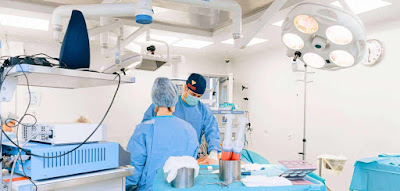Plastic surgery is a medical field that covers both reconstructive and cosmetic procedures. The goal of this type of surgery can be to maximize appearance and function. Often people think of plastic surgery as an unnecessary medical procedure, but that’s not the case.
In some instances, plastic surgery is medically necessary. If that’s the case, it’s covered by health insurance. There are many ‘grey areas’ in terms of how the coverage applies to plastic surgery; there are usually various factors taken into consideration by the carrier.
Reconstructive Surgery
Reconstructive surgery is the type of plastic surgery procedure that’s generally covered by health insurance plans. These are conducted as a treatment to restore function and healthy appearance.
In many cases, reconstructive surgery is used to correct deformities caused by trauma, medical conditions, or congenital abnormality.
Reconstructive surgery covers a wide variety of medical procedures. According to the American Society of Plastic Surgeons, there are over a million reconstructive surgeries annually. Let’s go over the most common types of reconstructive procedures.
Breast Reconstruction
One example of reconstructive surgery is breast reconstruction following a mastectomy for breast cancer. Breast reconstruction is performed to restore breasts to their standard shape, size, and appearance.
This surgery can either be done through implant-based reconstruction or flap reconstruction. The latter type of procedure utilizes the patient’s tissue from another part of their body.
Cleft Lip and Palate Repair
One of the most common congenital disabilities in America is the cleft lip/cleft palate. This occurs in the very early stages of fetal development. The cleft can impact a child’s ability to eat, speak, hear, and breathe.
In many cases, young children will undergo reconstructive surgery. This procedure is meant to restore proper function and reduce the appearance of the cleft lip.
Regenerative Medicine
Plastic surgery can also cover the field of regenerative medicine. In this science, tissues and organs are restored to normal function. This science engineers or regenerates human cells to help with everything from birth abnormalities to cancer therapy.
Scar Revision
Reconstructive plastic surgery is also used to minimize the appearance of a scar. This treatment can help the scare blend in with the surrounding skin. This procedure is typically minimally invasive.
Unlike the procedures we just mentioned, cosmetic surgery is not a medical treatment. These procedures are performed to enhance the overall appearance of the patient. Cosmetic surgery is not covered by medical insurance.
Cosmetic surgery procedures are broken into five main categories:
● Breast enhancement
● Facial contouring
● Facial rejuvenation
● Skin rejuvenation
● Body contouring
Breast enhancement procedures include breast augmentation, breast lifts, as well as breast reductions.
Facial contouring changes the structure of the facial features to add symmetry or definition. Standard procedures in this category include; rhinoplasty (nose job), chin contouring, and cheek enhancement.
Often individuals seek out facial rejuvenation, especially as they age. They go to a plastic surgeon for a facelift, or a lift for their eyelids, neck, or brow. They may also go for skin rejuvenation procedures such as laser resurfacing, Botox, and fillers.
Last but not least, many people ‘go under’ for body contouring procedures. These include the ever-popular ‘tummy tuck’ and liposuction. Another reasonably common surgery is gynecomastia treatment.
The Grey Area
When it comes to private health insurance coverage, the lines between cosmetic and reconstructive surgery are often blurry. It can be challenging to navigate all of the nuances. In the end, it’s up to the insurer.
Insurance companies can deem medical procedures as either “reconstructive” or “cosmetic,” depending on the patient’s situation.
One example of this is a nose job. In some cases, rhinoplasty is only to enhance someone’s appearance. Other times, however, rhinoplasty is required to help the patient with breathing. It may also be necessary after a severe nasal fracture.
Another procedure that often falls into the grey area is breast reduction. In some cases, this surgery is purely aesthetic, while in others, it’s recommended by a doctor. The procedure, otherwise known as mammoplasty, can be used to treat symptoms associated with macromastia.
Macromastia (having large breasts) can cause women terrible back, neck, and shoulder pain. If a woman suffers from these symptoms, she can talk to a doctor. If a physician recommends a breast reduction as treatment, it will be covered by health insurance.
A Final Note
Most patients universally believe that plastic surgery that’s focused on aesthetics is never covered by health insurance. While typically, that’s the case; in some situations, a procedure that may be considered “cosmetic” for one patient is actually “reconstructive” for another.
When it comes down to it, insurance companies take a patient’s medical history into account. If it turns out that a procedure may treat a particular health condition, it’ll be covered.






